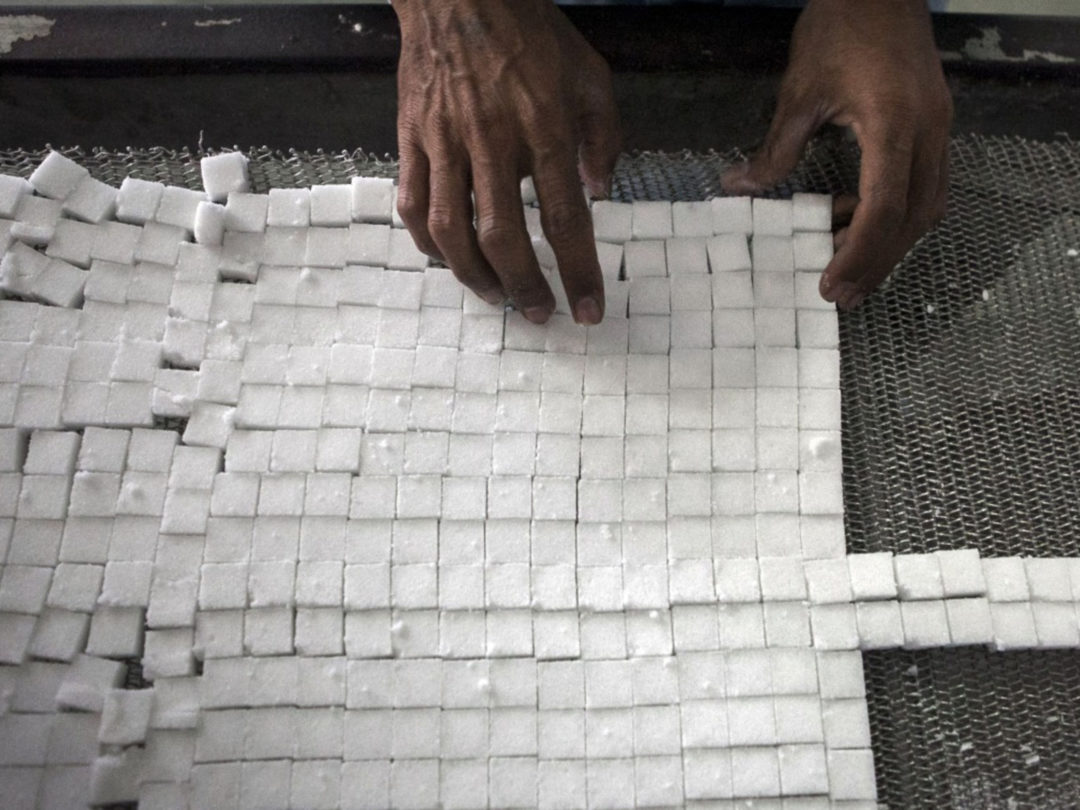
Visit Our Sponsors |
|
|
|
|
|
|
|
|
|
|
|
|
|
|
|
|
|
|
|
|
|
|
|
|
|
|
|
|
|
|
|
|
|
|
|
|
|
|

Sugar prices have slumped to the lowest in 11 months, defying forecasts for a shift in the global market to a deficit from a surplus. India, which often is a swing producer, again takes the spotlight as rivals lambaste the Asian nation’s export subsidies.
The Indian government’s policies on subsidies and export quotas spurred a challenge from other producers at the World Trade Organization. The escalating rift is said to be on Brazilian President Jair Bolsonaro’s agenda for a visit to India in November, the International Sugar Organization said in a report.
The dispute also is on the schedule for traders and investors at the S&P Global Platts sixth annual conference starting Sunday in Miami. Raw-sugar futures are down 8.4% to 11.02 cents a pound in 2019, heading for a third straight annual drop. Bullish sentiment has been eroded by a raft of exports from India that Brazil, the top producer, calls “unsustainable.”
“There’s plenty of worry for the market,” Michael McDougall, managing director at Paragon Global Markets in New York, said in a telephone interview. Sugar has been weak for two years, “which in general is not good for anybody,” he said.
Smaller producers such as Guatemala and El Salvador “will continue to suffer,” partly because of currency volatility, said McDougall, who will attend the Platts conference.
Citigroup Inc. called India’s policy “a blow” for bulls. While the country’s domestic prices remain strong, putting a viable export level around 13 cents, “hefty stocks and slowing domestic consumption growth” may cut margins and spur cheaper offers for exports, Aakash Doshi, a bank analyst, said in a report this week.
Last month, Citigroup forecast a global balance swing to a “bullish” supply deficit of 7.2 million tons in the 12 months starting Oct. 1, compared with a surplus this season. India, may produce 28 million tons, down 15%.
Hedge funds in the week ended Sept. 3 boosted bearish bets 10% to a record 189,100 futures and options contracts in raw sugar, data from the U.S. Commodity Futures Trading Commission showed Friday.
Turmoil in currency markets, prospects for slowing global sugar demand and the U.S.-China trade war will be hot topics in Miami, where more than 150 traders and executives are expected.
Brazil’s real and India’s rupee have weakened against the dollar, boosting the appeal of exports priced in greenback. World sweetener consumption is expected to increase 1.3% next year, below historic trends, the London-based International Sugar Organization projects.
Producers may get a boost by a global shift toward cane-based ethanol and increasing demand in emerging markets. Greater use of cane juice for biofuel in India, Brazil and possibly China may reduce inventory, Bruno Lima, an INTL FCStone analyst in Sao Paulo, said in a phone interview.
“Ethanol could be the saving grace for the sugar market,” Nick Gentile, managing partner at NickJen Capital Management in New York, said in a telephone interview.
A trade deal between Beijing and Washington may spark a rally, though “I don’t think anyone believes we are going to have a resolution until after the election,” Gentile said. “No one believes either side at this point.”
In a Sept. 5 report, the ISO said, “The fundamentals provide some grounds for cautious optimism” mainly because “the surplus phase seems over.” Inventories “are still overhanging the market and need to be absorbed before prices can return to more remunerative levels for producers,” the group said.
In India, exports can be unpredictable. Mills planned to ship 5 million tons in 2018-19, and the volume stood at 3.8 million at the end of August.
“The Indian sugar is there, but it’s actually not coming to the market,” FCStone’s Lima said. “You have to wait and see.”
RELATED CONTENT
RELATED VIDEOS
Timely, incisive articles delivered directly to your inbox.






